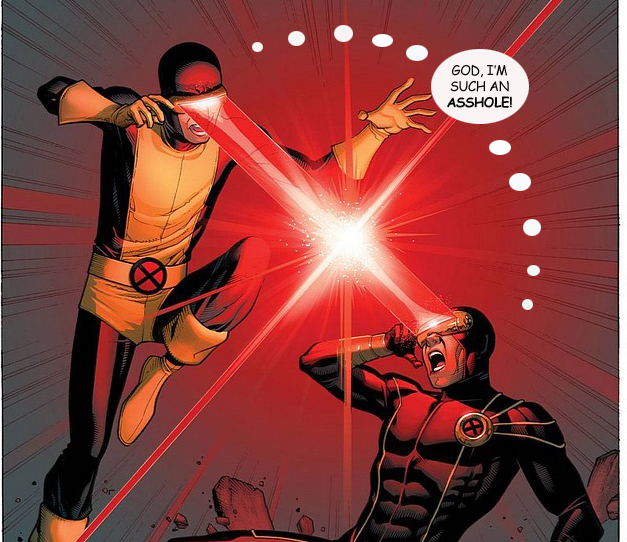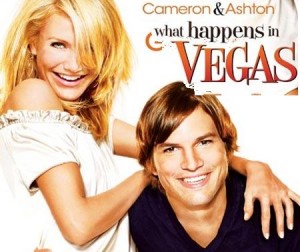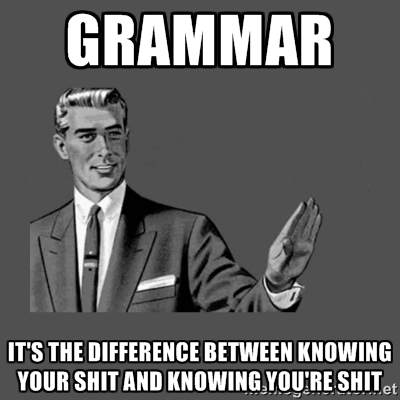
Cut & Print: Back to the Future (1985)
Author’s note: It really has been thirty years since Back to the Future has been released. To quote Avery Brooks, “where’s my flying cars?”
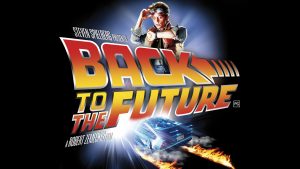
This year marks the thirtieth anniversary of a little movie called Back to the Future (and it really is a “little movie” – more on that in a moment) , and – to anyone that is at all familiar with these films (that should be everyone, really), noting this very span of thirty years – 1985 to 2015 – is significant in the films as well, as 2015 is where the hell (uh.. when the hell) these characters go for more adventures.
Back to the Future is a unique film series because it not only mixes the genres of science fiction, action, adventure, comedy, romance, and the buddy comedy so well, it somehow becomes more than all of these genres combined. Usually, when all of the genres are mixed together for one film, the final product rumbles along in fits and spurts like the Frankenstein’s monster that it is, but not Back to the Future. All of the genres are blended together seamlessly, and seemingly without effort (in truth, the filmmakers worked very hard to get everything to click). Yet, despite all of that, maybe the reason this movie is so loved are for those individual moments that are just funny or even interesting on their own, having nothing to do with any of those genres and the tropes that go with them. Do you find yourself chuckling whenever you watch it and you see Doc Brown’s reaction as his fiery wind-up car hits some old rags near the trash can and sets everything ablaze? Do you feel that Hill Valley is similar to the town that you grew up in, and do your parents or grandparents tell you that the town they grew up also looked like the 50’s version of Hill Valley? Do find that there’s no reason to question just why, despite the age gap, Marty and Doc are best of friends and instead you just believe with every fabric of your being that they just are? (I kind of miss going to science fiction films that don’t need explain details like this, because while it might seem important – on paper – to know the origin story of their friendship, enjoying their camaraderie is so easy, and the relation feels real and believable that no explanation is warranted.)
Writer Bob Gale was inspired by the thumbing through his father’s high school yearbook, and since they both went to the same high school, he wondered if he would have been friends with his dad if they had gone to school together. This was the inspiration for a story about a teenager who would travel into the past to meet his parents when they were in high school. The first film serves as a substitute for a film school course in How to Write a Screenplay, as every bit of detail that is set up in the early scenes will always pay off at the end. Marty’s accidental trip to the past in Doc Brown’s DeLorean time machine will disrupt his parents fateful meeting, which would prevent him from being born, so the movie works two prongs of its story simultaneously – how to get his parents back together even as his future father is a bit of shy and his future mother has a crush on him – and how to physically get him back to the time period where he belongs. This is not the simplest of stories, truth be told, yet the screenwriting is always on-point, the performances allow us to care about he characters, and the comic timing is second to none, so that even a child will be able to understand pretty much everything that happens, and he or she will even catch on to some of the more subtle jokes.
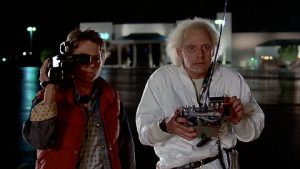
The first film feels like a big movie, but it really isn’t, and this is something that present-day screenwriters of science fiction and comic book films should take note: you don’t need to throw a lot of money or special effects at a movie, and you don’t need to have elaborate action sequences every six minutes to keep the attention of your audience. Think about this: the only time any really complicated special effects work is used for this film is in the scene at the mall when Marty first goes back in time, and again when he must use that lightning bolt to charge the Flux Capacitor to bring him back home. Yet, after finishing the film, audiences, even today’s younger viewers watching the film for the first time, feel like they’ve watched a bigger film. Part of the reason is that the story never takes a wrong turn, and the viewer is just eager to watch it play out. The second reason: the music. Alan Silvestri’s score is one of the finest film scores ever (it even knocked the socks off producer Steven Spielberg at an early screening); it is big and anthemic and exciting. The special effects guys might have produced the biggest lightning bolt ever seen on film during those climactic scenes, but it’s the score that really makes the film seem like one of the greatest adventures ever.
The first film ends with another intriguing special effect, as the DeLorean no longer needs roads to break the time barrier: we see the wheels fold up and the car take off. Intended as merely a gag that would allow the audience to walk out of the theater with grins on their faces, the filmmakers found themselves penning sequels in an effort to keep the studio from hiring someone else to make sequels without involving them. The two sequels are every bit as fun, and contain set pieces that some of the best films have to offer. Much of the humor of the sequels lie in how they references, scenes and lines from the first film in new and often charming ways. The second film shoots the viewer to an optimistic future (2015, to be exact) where technology (including those flying cars that Avery Brooks is still waiting for) is everywhere, and while not all of it works quite right, all of it was inspired by the culture of the time that the film was made, and the extrapolations were brilliant and funny at the same time. For the more hard-core fans of science fiction who really appreciated the dangers of what time travel could do as hinted in the first film, the second film was a real treat. The third film, which is set in largely in the Old West, is probably bigger and bolder than most people remember it being: when Doc and Marty use an old locomotive to push the DeLorean along the tracks, the special effects, music, and editing are all executed with both professionalism and panache, and there’s not a single unnecessary frame. This sequence should have been the model for how filmmakers bring that blockbuster action to the screen.
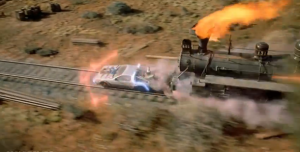
These sequel films take the story in some interesting directions, and the three films, as a whole, all seem to be of a piece. The trilogy might not top trilogies such as Star Wars, The Godfather, or Lord of The Rings when considered against the context of film history, but they will always earn a place in that conversation, and it has earned its right to be in such good company. While there are many other classic films about time travel that everyone should see, Back to the Future is often the one that comes to mind first. The reason: because the characters are relate-able, endearing, and human, and there’s is a real simple emotional through-line to these films that helps make the story easy to understand and enjoy.


